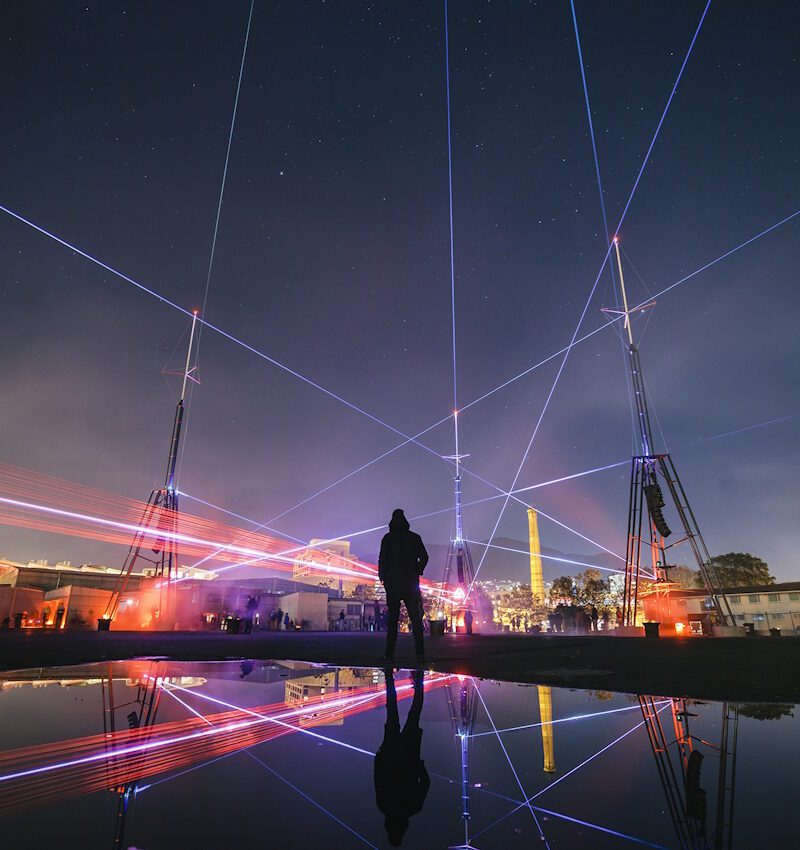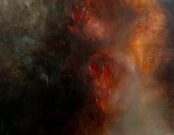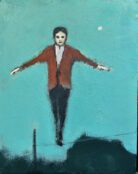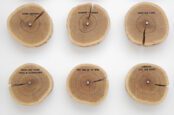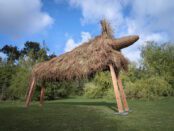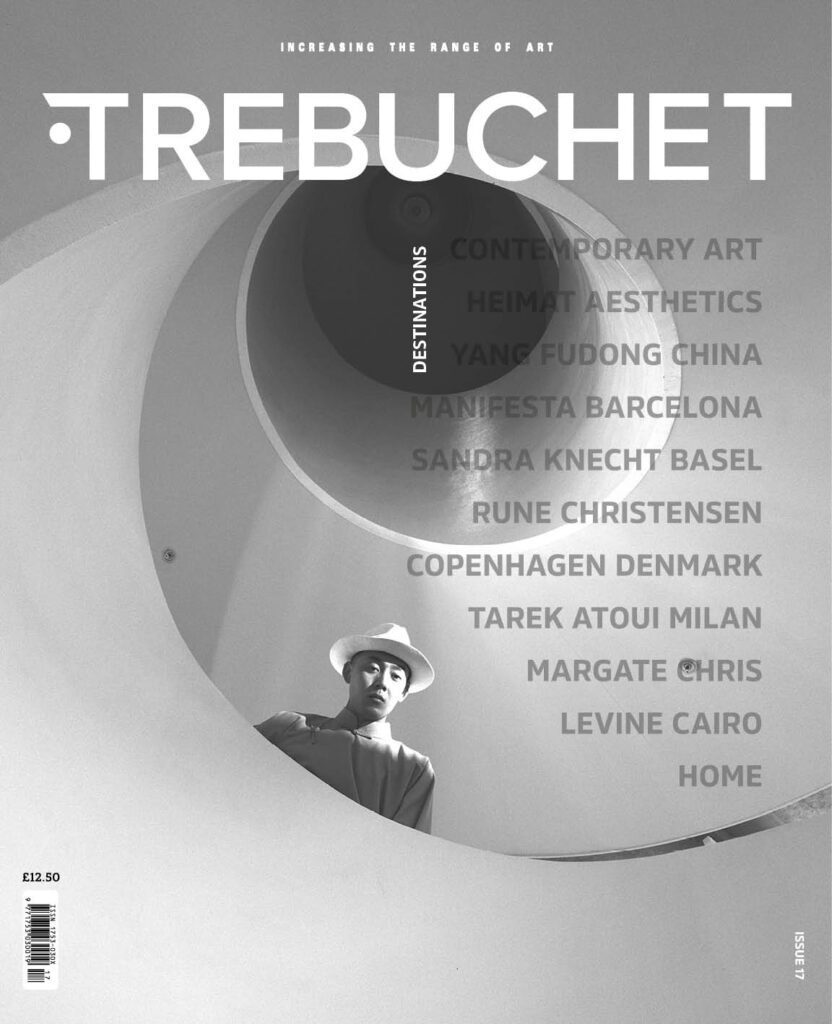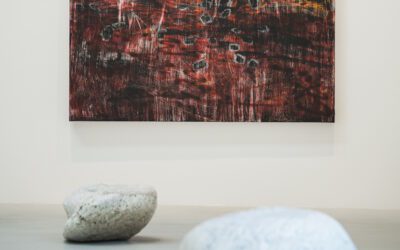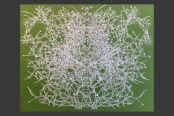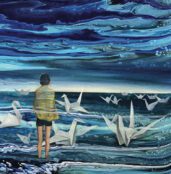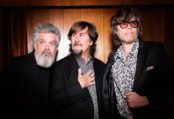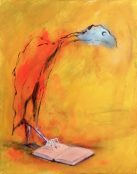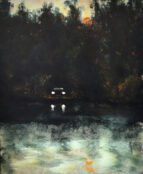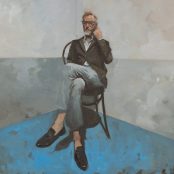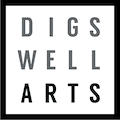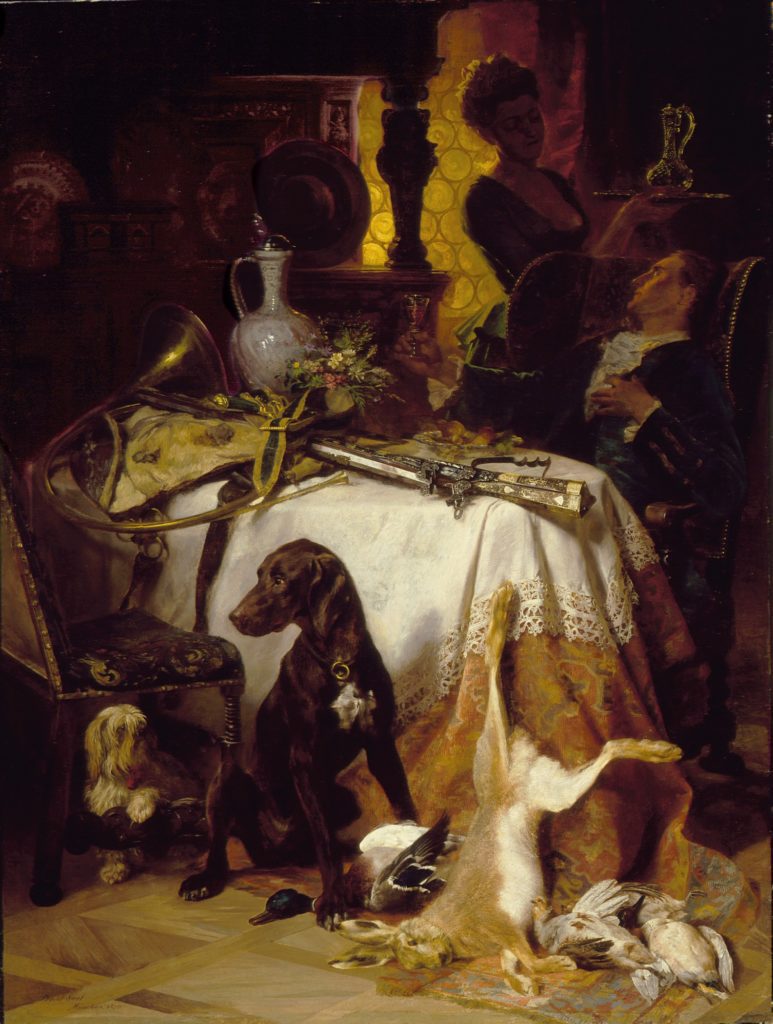The night sky cut in half by a giant laser, steam, smoke and air swirling like a paisley vortex. Attending Chris Levine’s stellar exhibition at Houghton Hall was a revelation in art’s transformative ability. The molecule and the laser show took the picturesque and made it deeper, more personal, teasing the edges of a tangible spiritual experience.
This is what Levine does. He creates connective moments for the viewer to contemplate themselves in the world. His acclaimed portraits capture celebrities at points of tranquillity, showing them without the usual self-consciousness mask we typically find them, but almost as supplicants to the great beyond. An experience that Levine often adorns with photographic techniques that heighten the presence of the subject.
As part of Trebuchet article on Levine for issue 17: Destinations we interviewed the artist to understand his approach to art making, discovering how he claims inspiration from knowledge which itself shapes the art he creates. For example his recent work on the plain of Giza in Egypt emerged through an process of adventure, serendipity, and a deep dive into ancient knowledge.
Chris Levine: From the top, it’s been a long ambition of mine, and vision of mine, to do something at Giza. The opportunity came about through Art D’Égypte, which is a group show in its fourth year, and it’s just gone from strength to strength. Holding any cultural events in Egypt is really problematic right now, but they’ve got all the permissions. The woman who runs this project, it’s her brainchild, is Nadine and each year it just gets more and more attention.

They originally asked me to do something a couple of years ago, but it’s always held in the last week of October, and I wasn’t really available until last year. But these things happen when they’re supposed to happen. It’s been an ambition of mine, partly born out of the work I did at the Eden Project, which really honed certain aspects of my work, where I really want to look at sacred sites as places to work, where I’m tapping into ley lines, where I’m working in conjunction with cosmology and geometry associated with these sites.
Megalithic circles have information in their geometry which relates to the precession of the Equinox. That’s a 26,000-year cycle. These ancients went to great trouble to move these stones and configure them in such a way that created a significant marker in time, which is pretty mind-blowing. And as much as possible, what I’m trying to do in my work is just channel it.
Often, as a lot of artists will say, musicians too… you talk about Hendrix, just channeling something there. He wasn’t thinking about that next note, he was in the moment. There’s real amazing footage of Prince playing, and something just going right through him. I feel at times when the dials are set right, I can get into those modes. I’m just channeling the work.
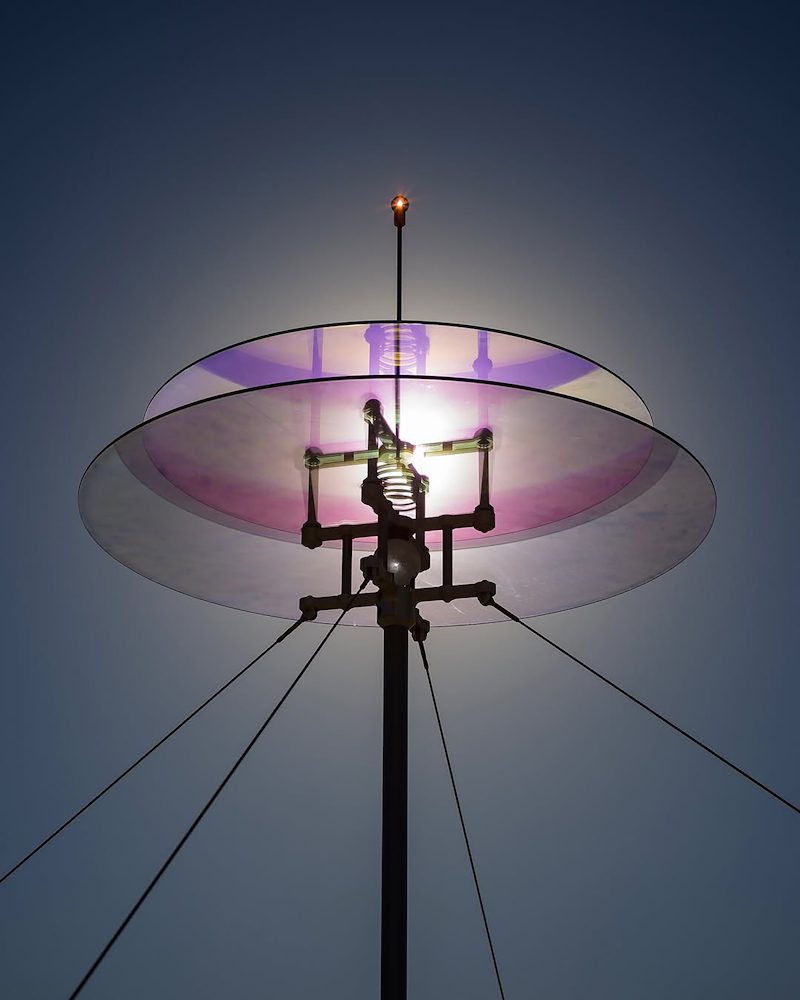
With Egypt and working with the pyramids, what was I going to do? It was a bit of a curveball when I went out to do a recce earlier in the year. I’d been thinking for a long time about what I would do with lasers on that site. They’ve done sound and light shows there. When I went out there to do a recce, they told me it would actually be during the day, not a nighttime thing. That was a curveball, but a really nice one, because then I’m thinking about the sun, the ultimate source of light. I wanted to take my work and work with sunlight, the ultimate source from that time. This gave me an opportunity to really tune into that. So ultimately, it is a work that tracks the sun.
I went out there and chose a site where I was going to install my piece. I’d been processing it for a long time, and it all manifested quite quickly. What I was trying to do is to extrapolate from the design of the pyramid, specifically the Great Pyramid. I wanted to take the geometry, the ratios, the numbers involved, its alignment with the stars—taking all of this information and then allowing it to be processed to form an object that had some harmonic resonance, born directly out of the ancient wisdom of the Great Pyramid.
There’s so much wisdom encoded in that structure. The coordinates are within 20 decimal points of the speed of light in meters per second. It’s accurately configured to the Earth’s measurements, it’s within a meter of the center mass of the Earth, and it’s pointing exactly due north. The more you go into the numbers, the more mind-blowing it gets. The Quadrivium, the name of my piece, is the ancient study of mathematics, astronomy, geometry and music. For my piece, As much as possible, every decision, every measurement, material of Quadrivium was made in relation to the Great Pyramid,, even the granite base was from the same mine region where a lot of the granite came from inside the Great Pyramids.
Where has your journey taken you on that particular drawing in of information? Have there been key ideas and thinkers that have really come through with you, through your work, or is this a recent development?
It’s gotten more honed and more focused over time. But I often think that when I started getting into meditation, that began a whole new chapter of my life, really. I’ve always been interested in science and physics. I’m not a physicist, I’m not a scientist, but I’m interested in a lot of scientific concepts, specifically honing in on light, the behavior of light. And that relates to reality in our realm. The more we understand light, how light works, we’re getting into the behavior in the physical realm between light and dark. And it goes into all kinds of areas.
Often, my work involves the use of quite advanced technology with lasers, super advanced tech. But really, for me, it’s just a means to an end of getting a very pure form of light. A laser is a single wavelength, a single frequency. It’s a very pure form of light. There’s a lot of technology to achieve it. When I was first working with lasers, they were scientific instruments. Now we’re using the laser display industry for entertainment, using it to entertain rockers, but back in the day it was a scientific instrument. Even when the first lasers started to get used in entertainment, and it was The Who that really jumped on it first, they were big! The power supplies were like the size of small cars. And the lasers were long glass tubes filled with different gases for different colors. Usually they were green—argon gas would give the green light, then helium neon is red. Helium cadmium is purple. But they were really delicate instruments, not really made for taking on the road. Watercooled.
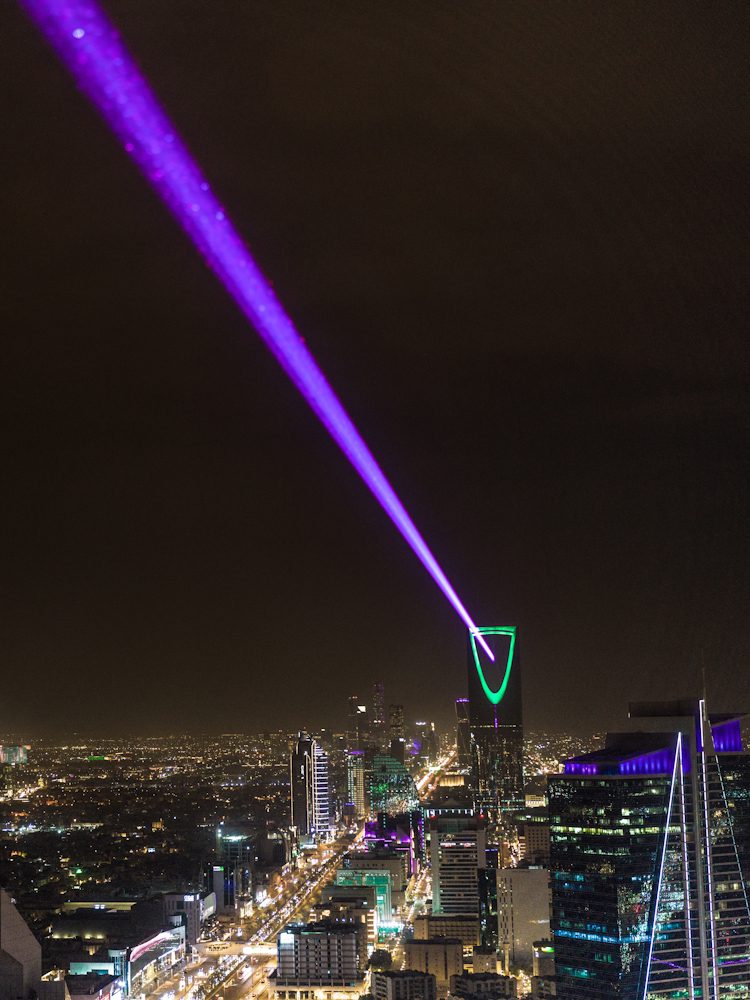
The big development is that they’re now solid state, they’re now electronic, using a diode crystal, and you can get colors by combining red, green and blue. It’s a lot more compact, literally running off a domestic power supply. You can get a really high powered laser now.
And we’ll come on to the next generation of laser, which I’ve got access to—the only one in the world. It’s an industrial laser, the same laser that’s used for welding Tesla cars together. They supply the Tesla factories with this laser, and my colleague in Germany has adapted it to give visible light because the lasers they use are infrared, and they’re very hot with invisible beams, whereas he’s adapted it to give out a visible light output. It’s levels and levels beyond anything I’ve worked with before. I’ve been mucking around with lasers for a long time, way too long, really. But I’ve loved lasers since I saw my first one in my physics lab when I was 11. But this is something else. I did some stuff in Riyadh recently with powerful lasers, but this makes them look like laser pointers.
Over time, I’m more and more interested in sacred sites. For instance, Stonehenge. English Heritage have given me a long-term project there, and I’ve said to them that, first of all, I want to meditate there, to really feel and be guided by the work I’m going to do there. I just want to get still there—I got permission to go meditate there. I want to allow it to come to me and try to keep it as loose as possible, like with the work in Egypt, is to channel it and manifest it into objects or experiences, or light forms that have some harmonic resonance with the Earth, or the geometry of Stonehenge, or another sacred site like Uluru in Australia.
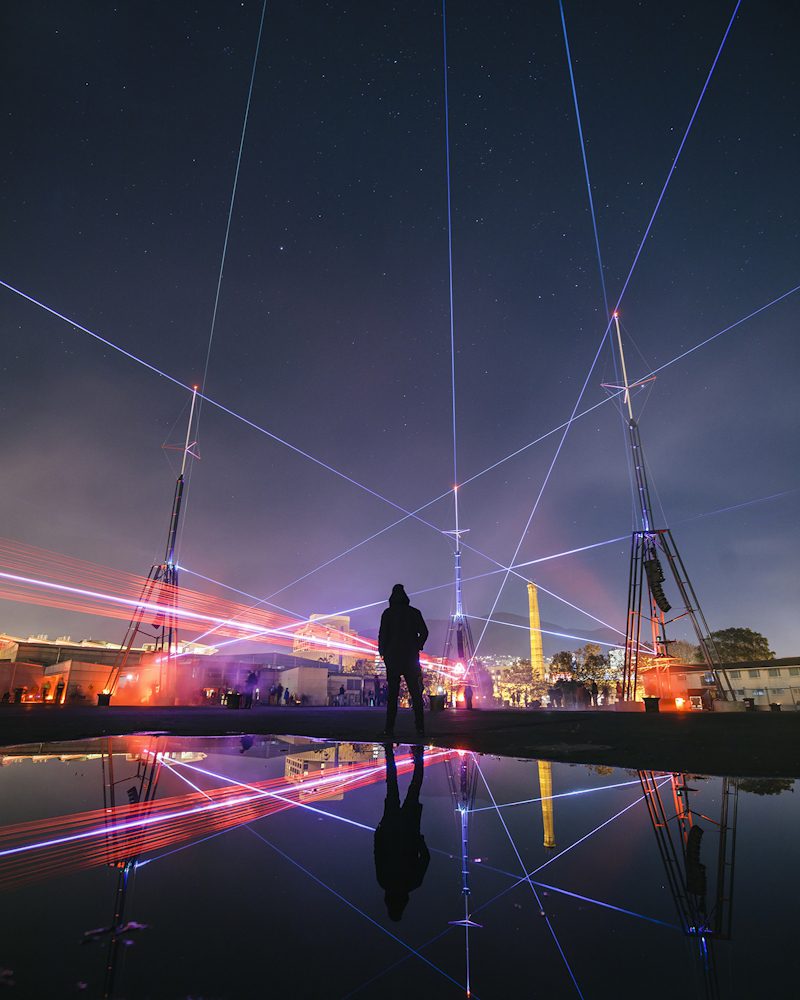
Call me crazy, but it’s nature. What we’re finding with ley lines is that there’s volcanic plugs underneath the earth, there’s waterways, and it’s like circuitry. What they’re finding is that on different nodal points on the Earth where civilization has really flourished, there are intersections of ley lines. It’s not necessarily that people gathered there because they knew about the ley lines, but the Earth drew them there. Our relationship with the planet is that we are more connected with it. We are a part of nature. We’re not apart from it. And we are absolutely, electrically and energetically connected in ways that we have little human understanding of. We only see visible light. Light goes up octaves, it goes down octaves. But we’re just tuned into our idea of what’s real, what we can perceive through our five senses within that limited band, that limited little box. What I’m trying to do is, in some ways, expand that bandwidth and perception through connecting with work which has a certain resonance with something much bigger.
Did you have a similar experience of tapping into the pyramids? Did you meditate there? Can you talk us through that experience, was there a similarly inspirational moment, perhaps?
Well, that moment goes back some time ago, probably about 15 years ago. I did a project in Cairo commissioned by the British High Commission. It was a laser show at a fashion show, best of British designers, six designers, held at the British Embassy. I did the lasers for it—not really spiritual, just the laser work.
But during that trip, we were there for three or four days while we set up the lasers and did the show. The next day we were coming back to London. It just seemed bizarre that we were rushing back. David Elliott from the British Council, said, “Well, listen, before you get the flight in the morning, let’s get up extra early. We’ll go into the pyramids, and you can be there before anyone else arrives.”
So we got there before the sun was up, and there was no one around. It was just three of us—I was with my engineer and my sound guy—the sun was coming up. There’s one moment where they went around the corner, and I looked around and couldn’t even see them. I was just alone on this site, looking around. The beautiful sky was coming up, the pink sky, everything. And I thought, “I’ve got to remember this, this is a real moment, really special.”
Anyhow, we went around and realized there was an opening where we could get inside the pyramid. Nowadays it’s really strictly controlled. Next thing we know, we’re crawling up this little shaft, and we’re in the king’s chamber! You’ve seen pictures of it—there’s that vessel which is not a tomb, but there’s this granite vessel which is about human size. It’s not a very big room. And the three of us are in there.
My sound guy, James, always carries a sound recorder with him wherever he goes. He’s always recording. The three of us are sitting in there, and James has got the sound recorder out. Howard, my engineer, gets inside this box and lies down inside it. I was saying, “Howard, it doesn’t feel right, man, be careful. You don’t know what you’re messing with.” He’s lying down in this thing. Now I wish I’d done it. Meanwhile, James recorded, and I’m sitting still, and we’re just taking it all in. We’re in there for about 15 minutes or so. Then we go out, and head back to the airport.
When we get back to London, James plays the sound recording, and I kid you not, there’s a dog barking on the tape. There’s a dog barking, but it’s not like a distortion that sounds a bit like a dog. There’s a dog barking on the tape! And they said, “That’s Anubis.” It’s beyond our understanding.
What I’ve discovered about that box is that it’s of certain proportions, and it’s precision-made. The way that it’s cut, they’d have a real job nowadays to cut something with that precision. And the geometry is very specific, and it relates to gamma waves. It’s said that you would lie in this box, and you’d get still, and you’d meditate, basically. And it would amplify your gamma waves, and by doing that, you’re connecting. One of the alignments is with the constellation of Orion. One of these chambers points directly up at the center of Orion. This was some kind of ascension device that projected you, or connected you, into other realms beyond just the physical.

The pyramid is taking Earth energy. It’s on the center mass of Earth, with a pyramid shape, which we know conducts energy fields. It was aligned perfectly due north, there are all sorts of configurations with it. It’s basically a technology—a form of technology for consciousness.
The Egyptians were fascinated with gold. It wasn’t just for decorative things. Gold is a superconductor. They used gold in ways of amplifying energy. We are electrical beings, it all comes down to electrical charges. Gold was a superconductor they used in various ways, one of which was, they say, ingesting monatomic gold. What is monatomic gold? It’s gold in single atom form. They say that in single atom form, if you ingest it, it becomes part of your body. And if we take it that we are electrical beings, what the Egyptians did by ingesting a lot of it over time is that it made them much more conductive to energy, to electrical energy. In single atom form, monatomic gold—sometimes called the philosopher’s stone—really helped them as beings conduct more chi, or electricity, in various ways.
And then you combine that with the pyramid. Apparently, the very top of the pyramid was solid gold, the actual point, and then it went to granite. That capstone is long gone. And the pyramids were coated in a highly polished white material—might be mica. There are different layers to it, but it was all about energy. As Tesla said, “Think in terms of frequency and vibration to understand the universe.” And then going beyond that, you can articulate frequency and vibration in numbers. There’s a numerical order to things, which is like sacred geometry, the Fibonacci sequence, Golden Ratio. There’s much sacred geometry factored into the design of the pyramids; those numbers keep repeating themselves in the design.

Another important aspect of the design of my piece/of Quadrivium are the three discs. One is a copper disc, and that’s in relation to the proportions of the moon. Then there are two glass discs, one in relation to the Earth, and then Venus. Venus is a significant planet in relation to the functionality of these structures. A lot of these megalithic structures, like what they found at Stonehenge, don’t work all year round—there are specific times of the year, cycles, equinoxes, where the configuration is such that it really works.
One of the things I’m interested in with Stonehenge is the invisible aspects. What they think with the big stones is that what they were doing with certain types of stones, which were more conductive, is that they’re modulating the flux, the energy field of the Earth. By configuring big stones, they could control the flux of energy that’s coming out at certain points and channel it. And probably then they went in the middle of it, or they positioned themselves in relation to it, and then got still and looked up at the stars.
Interviewer: That leads to my question about your works—do you consider the viewer? Are you creating a Stonehenge-like thing with your work, where viewers can get in contact in some fashion, physically, or by thinking about it, or something with those ratios and numbers and energy fields yourself?
It is beyond my understanding. If I can create something using the Quadrivium principles, it’s like a harmonic resonator. The numbers, the geometry, the proportions—if you rest your attention onto it, you’re resting your attention onto an object that is in tune with the harmony of the numbers and the positioning. By putting your attention on it, you are connecting with it, and by connecting with something that is resonating at a much deeper or bigger level than we can ever imagine… conceptually, I like the idea that you might be tapping into something much bigger. It might be an aid to meditation, or it might be something else entirely.
I was in Costa Rica last week, and I did a psilocybin ceremony. I had this real sense of a supreme being, our creator, and that the purpose of getting still and being aware of this was to align with that supreme being energetically and with your intention. “Thy will be done.” By doing that, coming into alignment, coming into harmony with that supreme being, I just felt like that’s what it’s all about. That should be our work—to try and keep it God’s will, not my will, not what I want to do. It’s alignment with a higher purpose somehow. And in my work, I’m trying to absolutely align it with the mysterious, bigger realm of reality. If you could expand those numbers out from geometry and say, we’re already sensitive to this, like a little bandwidth. But if you can create something and put your attention on all of yourself, you can find something deeper.
Interviewer: When we’ve seen one of your shows before, where there’s what I consider quite beautiful documentation of your projects, sketches and those sorts of things and some test materials. How much of that are you aware of? Do you curate that yourself when you’re doing the projects? Or is it just the nature of it, that it appears beautiful as well?
Well, it’s part of the process. I don’t have, like, an A to Z process for how I approach each project. I do feel that a lot of my inspiration comes from meditation. I’ve been meditating for 20 years, on and off—well, I say on and off, but I’ve meditated every day for the last 20 years. My practice is sometimes weak, sometimes strong, but it’s a very important part of how I function, personally in my life, and in my work.
That thing of a supreme being—if you can get still, then you can get beyond the noise and the mind and get more connected with the heart. That’s where the alignment with any Supreme Being is. This brain is just an information sequencer. But the real intelligence is here, in the heart.

I’ll never forget one moment when we lived in Ireland for a while. We lived in a beautiful place. We had our own beach where we could see the sunset. It was absolutely incredible.
I remember one night, I went to sleep in a spare room. I woke up in the middle of the night and sat bolt upright. It was like a voice was saying to me, “Chris, it’s all about balancing the heart and mind. That’s what it’s all about. That’s what you’re here for.” I get goosebumps as I tell that. We’re blocked off from the heart, but they often say that the journey from here [pointing to head] to here [pointing to heart] is life itself, and it’s a long journey with struggles.
What I’m trying to do in my work, and by getting still, is to create pieces that have a certain sense about them. If you tune into them or just look at them, just enjoying the colours… when I’m creating work, there’s no A to Z process. It can take the form of sketches or prints that can manifest in different ways along the journey. It’s different every time. I’m reaching into something and sometimes trying not to think too hard about it. I’m just trying to be aware in a way that allows it to come out.
It’s clearly working. Sounds like you’re very busy. Can you talk about your recent or upcoming work?
The last few weeks have been great. We might have done this sooner, but there’s been a lot happening. I will just tell you about this laser I used in Riyadh. We call it “the mother beam” because it is next-level power compared to any laser. I put four of them on top of the Norman Foster-designed building in the middle of Riyadh – the Al Faisaliah tower. They were pointing north, south, east, and west, Morse-coding a message across the city. These are 600-watt lasers, much more powerful than anything else I’ve worked with. There are only four in the world. I managed to get hold of them to put them on top of this building. We’ve never put anything on top of this Foster building before, so it all had to work. And it did! It was really simple.
I actually met Norman Foster underneath the “Molecule of Light,” which is a sphere. I met Norman Foster under this sphere. The building [the Al Faisaliah] has a sphere, and my lasers came out from underneath it.
Sometimes I just feel I’m acting in some play. It’s all a bit like theater. Anyway, I’m a member of a few geek forums. A few weeks ago I came across this guy in Germany who wrote to me a couple of years ago saying, “We’re developing high-powered lasers. It’s our life’s work. We love your work.” I get approached quite a lot because lasers are now big in the entertainment industry. People write to me saying, “We’d like you to use our laser.” I just thought it was another one of those pitches.
But anyway, I saw this thing. He took a three-kilowatt laser—that’s a 3000-watt laser. Whereas the one I used in Riyadh is 600 watts, this is actually 3020-watt lasers in an array. Like I said, it’s a modified industrial laser that’s used for welding, really high-end welding that Tesla factories use. It’s from a big German company.
When I saw this, I thought, “I’ve got to come and see this thing.” He had to get permission from the aviation authorities to put the beam in the sky. So I went over a couple of weeks ago and had a look at this device. Oh my God! It was a bit foggy, but we got a beam up into the clouds. The whole town lit up green!
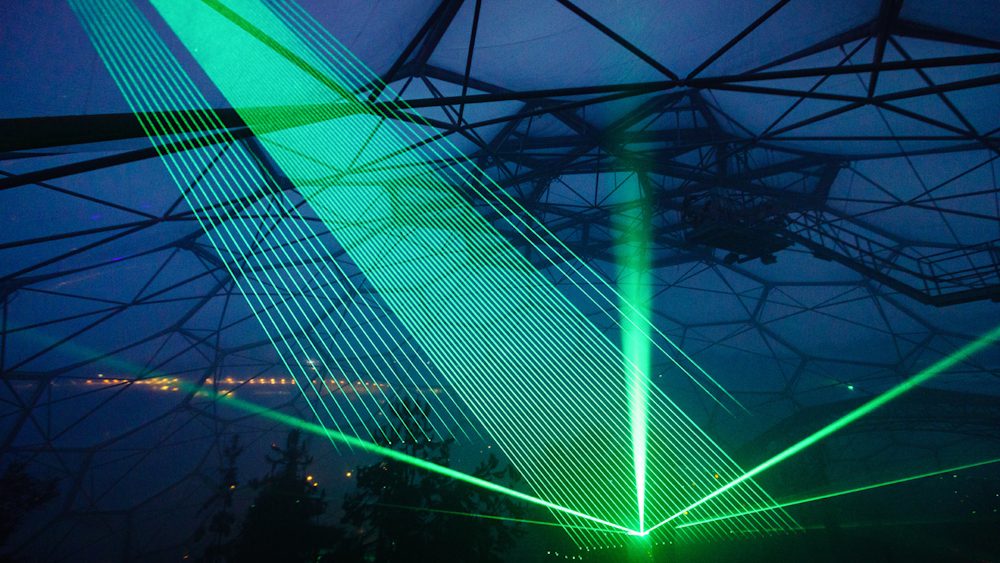
I did these two things in Saudi Arabia. I was out there in November. I did two pieces, one in the desert as part of Noor Festival, which is a big light art festival. The Saudis believe that biggest is best—it’s going for records as the biggest light art festival in the world. There are 100 artists, 50 international and 50 from the Middle East, with some big names involved. They gave me two pieces; I was the only artist doing two pieces. One of them was the one on top of the tower.
While I was out there in November to December (it was up for three weeks), on the Saturday I was invited to come and give a talk at the British Embassy about my work. The next day, on the Sunday, I gave a talk, and this woman came up to me afterward. It turns out she’s interested in bringing my work to the Middle East more regularly. They saw the beams over the city, so for the next Noor Festival, I’m hoping to take this new laser out into the desert and really create something spectacular there.
Read more in Trebuchet 17: Destinations
Yang Fudong – China’s Foremost Artist?
Manifesta 15 – Message received?
Sandra Knecht – Redefining home
Art in the Margate – Escape or reality?
Art in Copenhagen – What to witness
Aesthetics now – After theory, now what?
Rune Christensen – Fairytales and tradition
Tarek Atoui – Improvised Sound Installations
Outsider art and the new devolved
Chris Levine
Profile: Sarah Hilliam (National Portrait Gallery)
Images courtesy of Chris Levine

The aim of art is to represent not the outward appearance of things, but their inward significance. – Aristotle

